This gallery of post-war Huntley & Palmers biscuit tins demonstrate the simplification of shapes and designs in comparison with the first half of the twentieth century.
Early Mist, 1953
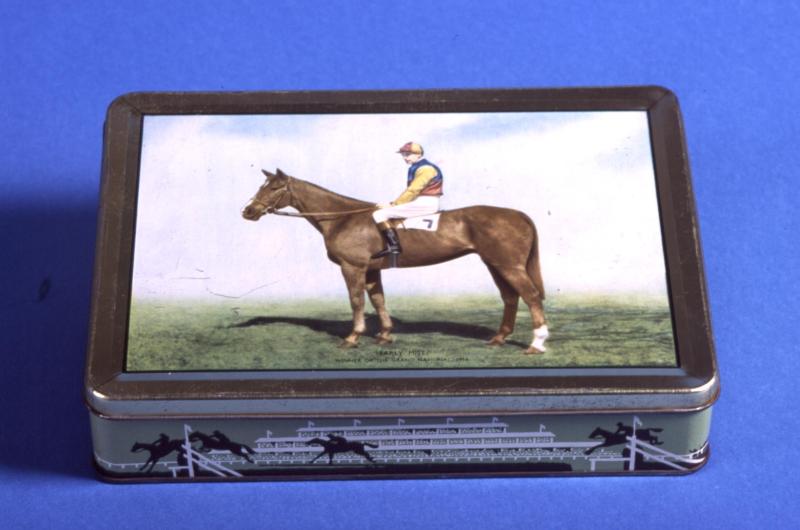
Early Mist won the Grand National in 1953 at odds of 20-1. He was the first of three consecutive winners trained by Vincent O'Brien from Ireland. Designed by apprentice designer Ken Robbins and manufactured by Huntley Boorne & Stevens.(REDMG : 1992.2.408)
Cocktail biscuits, 1955

(REDMG : 1992.2.440)
In 1975 Huntley and Palmers' Public Relations office issued guidance on 'When to serve British Biscuits'. For cocktail biscuits the guidance states: 'One of the most popular ranges of high quality English biscuits. These biscuits are ideal for serving at cocktail parties which are themselves an ideal way of entertaining friends. These biscuits can be served in so many ways, either on their own being flavoured with cheese, tomato, curry and herbs or with a savoury dip.'
South Pacific, 1962
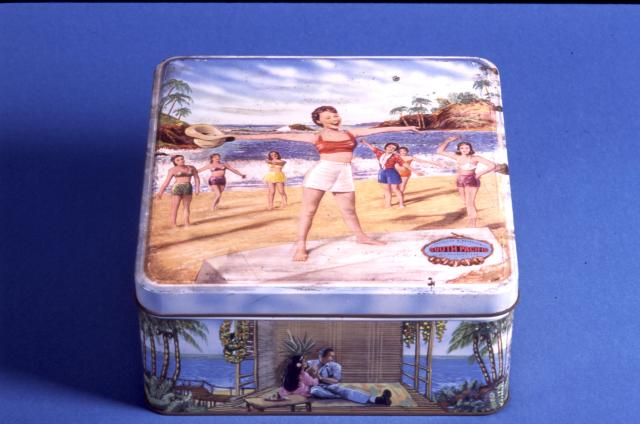
South Pacific was one of several stage shows which were produced as films in the 1950s. The movie South Pacific was released in 1958 and inspired the creation of this tin, issued four years later in 1962. (REDMG : 1992.2.904)
Daisy pattern, 1969
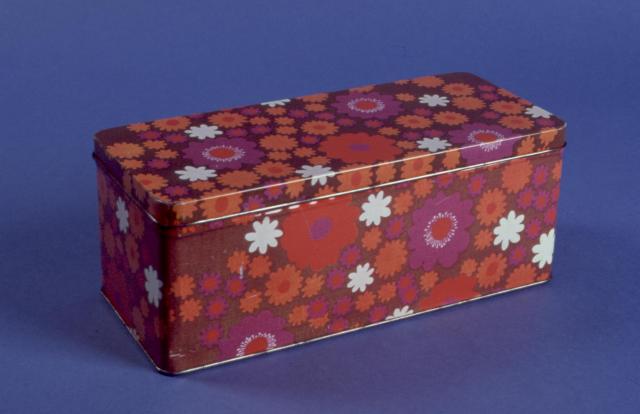
The owner of this 'flower power'-inspired tin used it to store souvenirs of her time as a nurse during World War I in the Balkans, including a notice from a local mayor thanking the British troops and an ear of wheat. (REDMG : 1997.79.54)
Sentry box, 1971
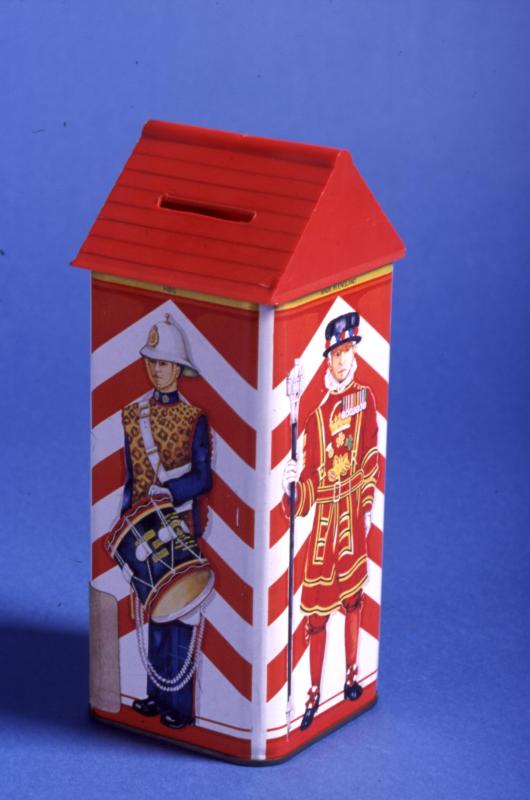
This tin is in the shape of a sentry box with illustrations around the sides of Guardsman, Royal Marine, Yeoman and Hussar. The slit in its red plastic lid meant it could be reused as a money box. (REDMG : 1992.2.352)
Wedgwood caddy, 1976
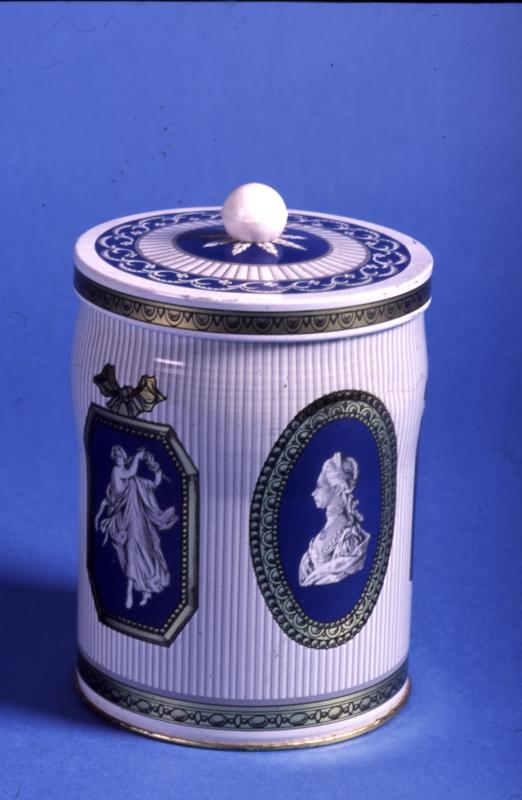
Huntley & Palmers issued their first Wedgwood tin in 1949 and over the next 30 years they produced over 20 different tins with Wedgwood designs. This tin is marked 'Design inspired by Josiah Wedgwood & Sons Ltd.' (REDMG : 1992.2.355)
The next section is about how to identify your Huntley & Palmers tin.





